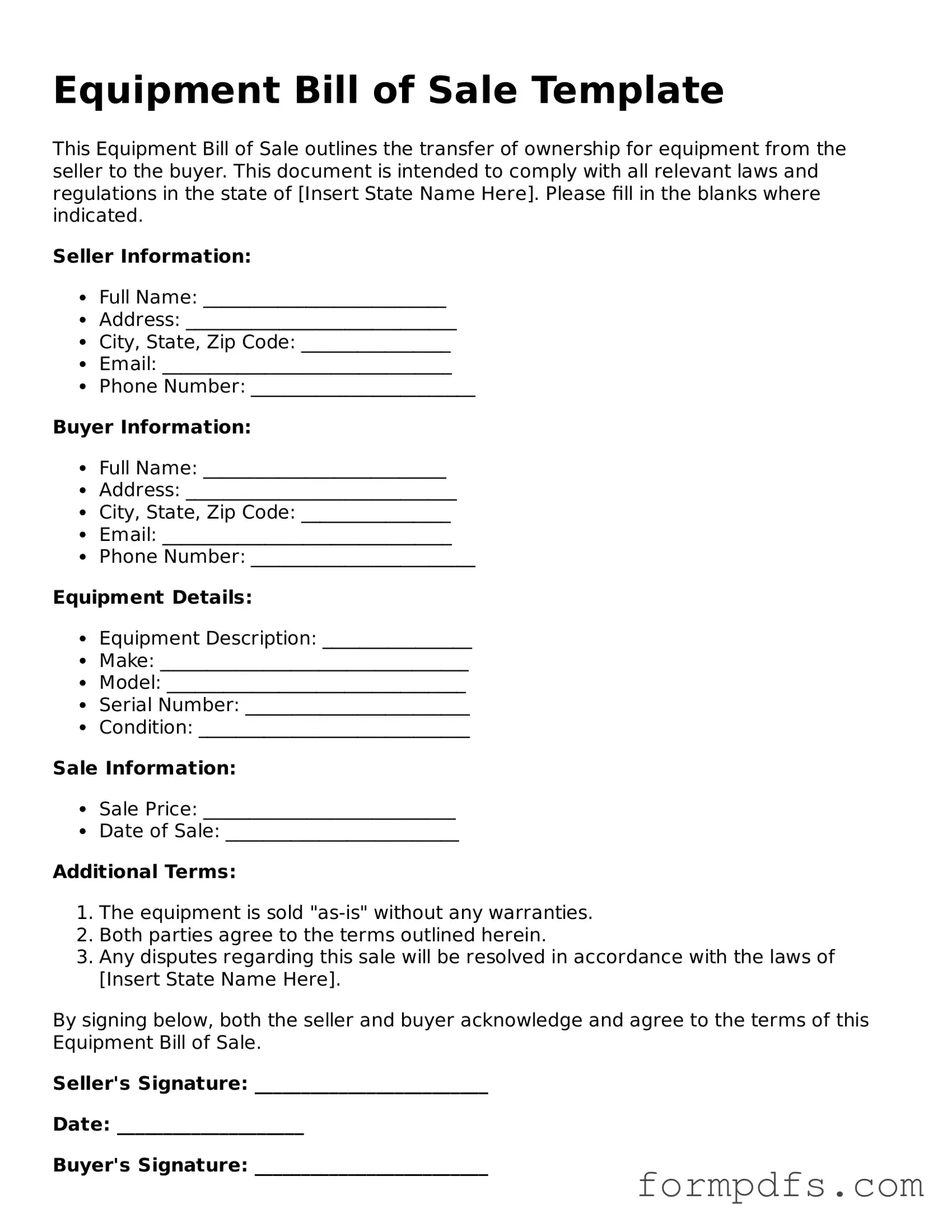What is an Equipment Bill of Sale?
An Equipment Bill of Sale is a legal document that records the transfer of ownership of equipment from a seller to a buyer. It serves as proof of the transaction, detailing the specific equipment being sold, the sale price, and the date of the sale. This document is essential for both parties, as it helps protect their rights and provides a clear record of the exchange.
Why is an Equipment Bill of Sale important?
This document is crucial for several reasons. First, it provides legal protection for both the buyer and seller by establishing clear terms of the sale. In case of disputes, having a written record can help clarify what was agreed upon. Additionally, it may be required for tax purposes or when registering the equipment with local authorities. It can also assist in proving ownership if the equipment is lost or stolen.
What information should be included in an Equipment Bill of Sale?
A comprehensive Equipment Bill of Sale should include the following details: the names and addresses of both the buyer and seller, a detailed description of the equipment (including make, model, serial number, and condition), the sale price, and the date of the transaction. It may also be beneficial to include any warranties or guarantees associated with the equipment. Lastly, both parties should sign and date the document to validate the agreement.
Can an Equipment Bill of Sale be used for different types of equipment?
Yes, an Equipment Bill of Sale can be used for various types of equipment, including machinery, vehicles, and tools. However, the specifics of the bill may need to be tailored to fit the type of equipment being sold. For instance, vehicles may require additional information such as VIN numbers and registration details, while industrial machinery might need specifications about its operational capacity and safety features.
Is it necessary to have the Equipment Bill of Sale notarized?
While it is not always required to have an Equipment Bill of Sale notarized, doing so can add an extra layer of security and authenticity to the document. Notarization can help verify the identities of both parties and ensure that they willingly entered into the agreement. In some cases, particularly for high-value transactions or when local laws dictate, notarization may be advisable or even required.
